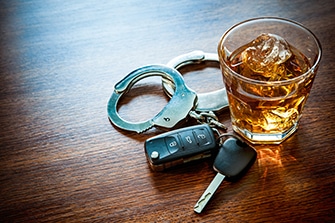All About Blood Alcohol Levels
Blood alcohol levels, also known as blood alcohol content, is a way to measure an individual’s level of alcohol intoxication. It represents the percentage of alcohol that is concentrated in the bloodstream. Blood alcohol levels are used for legal purposes, such as measuring individuals for drunk driving incidents, and for medical purposes, such as testing patients who enter the hospital for alcohol-related health issues.
What Are The Different Blood Alcohol Levels?
There are many factors that influence a person’s blood alcohol levels. They can include body weight, gender, genetics, tolerance to alcohol, drinking patterns, and type of alcohol consumed. However, as a general estimate, the Centers for Disease Control and Prevention categorize the following alcohol levels in these types of alcohol:
- 12 ounces of beer, or one bottle at 5% alcohol
- 8 ounces of malt liquor at 7% alcohol
- 5 ounces of wine at 12% alcohol
- 1.5 ounces of hard liquor, or one shot, at 40% alcohol
Side Effects of Increased Blood Alcohol Levels
As drinking increases, so does intoxication and impairment. Many emotional and physical side effects begin and get worse, which can cause severe negative consequences to an individual’s life. How quickly an individual reaches certain blood alcohol levels depend on many factors and, as such, the type of alcohol consumed in a period of time should be paid close attention to. Everyone’s body is different and will react differently to the various types of alcohol.
There are many side effects that occur as blood alcohol levels rise, according to AwareAwakeAlive.org:
.020 – Light to moderate drinkers begin to feel some effects
.040 – Most people begin to feel relaxed
.060 – Judgment is somewhat impaired
.080 – Definite impairment of muscle coordination and driving skills. This is the legal intoxication level in most states.
.100 – Clear deterioration of reaction time and control. This is legally drunk in all states.
.120 – Vomiting usually occurs
.150 – Balance and movement are impaired. Here the equivalent of a 1/2 pint of whiskey is circulating in the bloodstream.
.200 – Most people begin to experience blackouts
.300 – Many people lose consciousness
.400 – Most people lose consciousness and some die
.450 – Breathing stops. This is a fatal dose for most people.
Effects of Alcohol on the Body
Alcohol is a depressant. Although alcohol can temporarily provide feelings of euphoria, confidence, and relaxation, it also brings anxiety and depression with it once the initial positive feelings wear off. This is because alcohol releases increased levels of dopamine that can cause a large emotional “crash” later.
An individual can feel sick, hungover, depression, and anxiety the day after a drinking binge. People who suffer from alcohol use disorder will continue drinking when this occurs, as to try to achieve the same level of euphoria they first felt.
More effects of alcohol on the body include:
- Lowered inhibitions
- Poor social judgment
- Trouble concentrating
- Loss of coordination
- Loss of critical judgment
- Dulled perception, especially vision
- Mood swings
- Reduced core body temperature
- Raised blood pressure
- Passing out
- Vomiting
- Memory loss
- Loss of attention span
- Trouble learning
- Alcoholic hepatitis
- Liver fibrosis
- Steatosis (i.e., fatty liver)
- Throat, mouth, larynx, breast, liver, colorectal, or esophageal cancer
- High blood pressure
- Cardiomyopathy
- Stroke
- Irregular heartbeat
Binge Drinking and Blood Alcohol Levels
Alcohol dissipates at a rate of about .015% per hour. Gender, weight, tolerance levels and more factors do not affect how quickly alcohol leaves the body. In addition, opposed to what many believe, coffee and water do not make alcohol leave the body quicker, either. Only time will move the process along, which is what makes it so important for people to space out their drinks, rather than binge drinking, if they have concerns about rising blood alcohol levels.
Binge drinking occurs by drinking large amounts of alcohol in a single session. This is defined as five or more drinks at one time for a man, or four or more drinks at one time for a woman. Binge drinking can severely impact someone’s blood alcohol levels in a very short period of time. These sudden changes to the body and bloodstream can cause sudden impairment and uncomfortable physical symptoms.
According to SAMHSA, binge drinking on 5 or more days in the past month is considered heavy alcohol use which increases a person’ risk of developing an alcohol use disorder (AUD).
About Cliffside Malibu
Alcohol use disorder can affect anyone, no matter the number of their blood alcohol levels. Negative consequences relating to alcohol can occur at even the lowest level of blood alcohol content, which makes it extremely important to seek help as soon as possible instead of waiting for it to get worse.
Since no two addictions are the same, Cliffside Malibu offers an individualized treatment plan for every client. We are committed to providing evidence-based treatment through a continuum of care model including medically supervised detox, residential treatment, day treatment, and outpatient services. Our program also includes family therapy and holistic therapy, as well. Whether an individual is suffering from substance abuse and/or alcohol addiction, our programs are structured to create a supportive environment where healing can begin.
In addition to world-class treatment, Cliffside Malibu offers luxury accommodations, a serene environment, five-star dining, and plentiful amenities. We understand that addiction treatment is a rigorous process. Therefore, we provide for your comfort and relaxation at every turn, allowing you to rejuvenate, and meet the demands of treatment with your greatest energy and attention.
For more information on Cliffside Malibu, visit cliffsidemalibu.com
